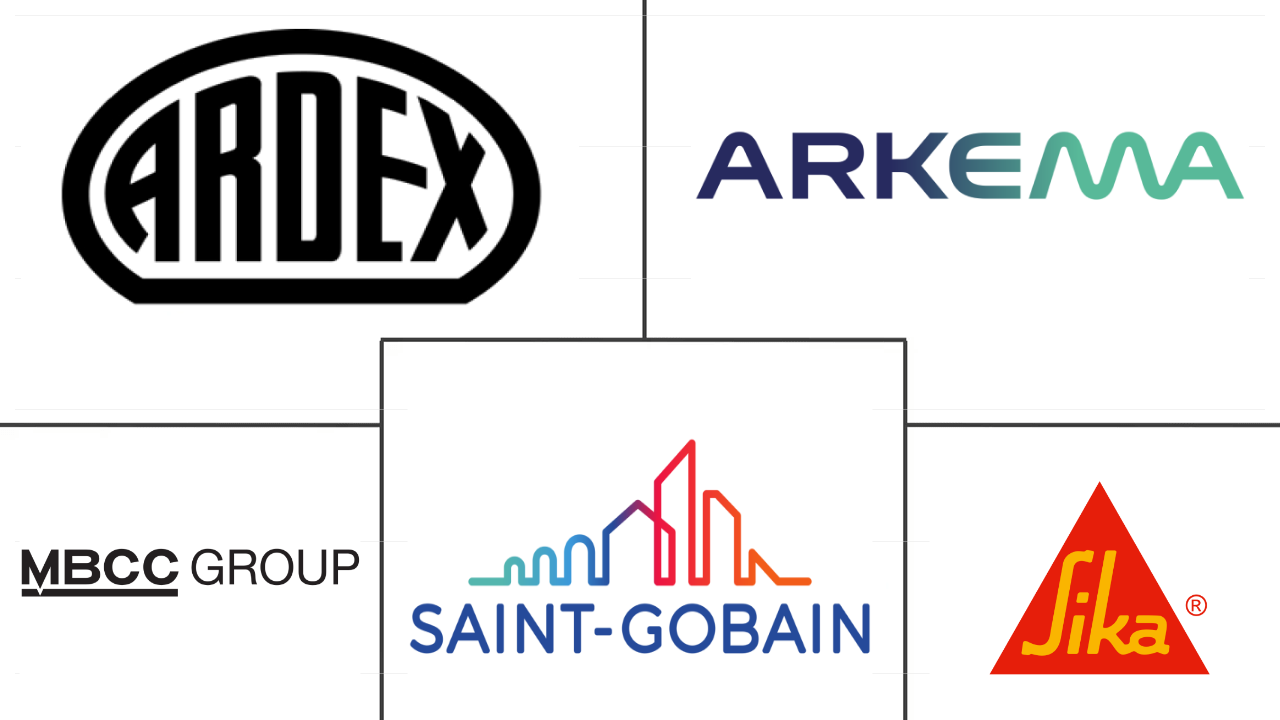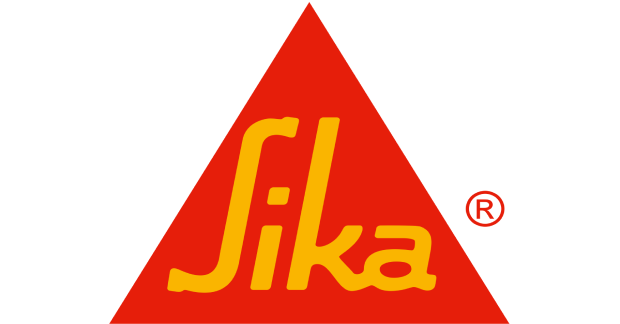Market Size of asia-pacific anchors and grouts Industry
| Icons | Lable | Value |
|---|---|---|
|
|
Study Period | 2018 - 2030 |
|
|
Market Size (2024) | USD 0.98 Billion |
|
|
Market Size (2030) | USD 1.52 Billion |
|
|
Largest Share by End Use Sector | Residential |
|
|
CAGR (2024 - 2030) | 7.55 % |
|
|
Largest Share by Country | China |
|
|
Market Concentration | Low |
Major Players |
||

|
||
|
*Disclaimer: Major Players sorted in no particular order |
Asia-Pacific Anchors and Grouts Market Analysis
The Asia-Pacific Anchors and Grouts Market size is estimated at 0.98 billion USD in 2024, and is expected to reach 1.52 billion USD by 2030, growing at a CAGR of 7.55% during the forecast period (2024-2030).
0.98 Billion
Market Size in 2024 (USD)
1.52 Billion
Market Size in 2030 (USD)
3.00 %
CAGR (2018-2023)
7.55 %
CAGR (2024-2030)
Largest Market by Sub Product
61.80 %
value share, Resin Fixing, 2023
Owing to its widespread applications in residential and industrial constructions due to its properties, such as corrosion-resistant, vibration-resistant, etc., the segment holds the largest share.
Largest Market by End Use Sector
31.27 %
value share, Residential, 2023
Due to the increasing usage of anchors and grouts for applications such as flooring, tiled walls, tile joints, etc., to build high-quality and attractive homes, apartments, etc., the residential sector holds the largest share.
Largest Market by Country
64.67 %
value share, China, 2023
With the development of provinces in China, followed by the construction of huge residential complexes, the demand for anchors and grouts increased, making the country the largest consumer in the region.
Fastest Market by Country
8.01 %
Projected CAGR, Japan, 2024-2030
With the growing investments in urban infrastructure development, including the new subway system in Tokyo, to raise the consumption of anchors and grouts, Japan is expected to be the fastest-growing country in the market.
Leading Company
7.75 %
market share, Sika AG, 2022

The company's broad range of high-quality products, well-established network in the region, robust supply chain, and strategic expansions and acquisitions in the construction industry make it a major player in the market.
Industrial and institutional sector to grow at a faster rate during the forecast period
- In 2022, the market studied witnessed a 1.5% decline in demand, primarily driven by a dip in construction activities across end-user sectors. However, the construction volume was projected to rebound in 2023, leading to a 5.1% surge in demand for anchors and grouts compared to 2022.
- The residential sector dominates the anchors and grouts market in Asia-Pacific, given its substantial population, accounting for over half of the global total. Notably, China alone represented 67% of the region's demand in 2022. The demand is fueled by various applications of these products, including joint filling, concrete crack repairs, and structural enhancements.
- In 2022, the infrastructure sector emerged as the second-largest consumer of anchors and grouts. Governments in the region prioritized infrastructure development to stimulate their economies and attract foreign investments. For instance, India's infrastructure spending in 2022 rose by 3.1% from the previous year, aligning with its plan to invest approximately USD 1.4 trillion in infrastructure projects between 2019 and 2023.
- During the forecast period (2023-2030), the industrial and institutional sector is projected to witness the highest growth in market value, boasting a CAGR of 8.82%. This surge can be attributed to the escalating construction of facilities like manufacturing plants, educational institutions, and healthcare centers. This trend is propelled by the expanding urban population and the appeal of relatively affordable labor and land costs. For instance, in 2023, Chinese automaker BYD Co. announced its investment in electric vehicle manufacturing and assembly in Vietnam.
High demand is forecasted for anchors and grouts in Japan as companies bring production units back home
- Construction chemicals like anchors and grouts play a crucial role in enhancing the stability, strength, and longevity of structures such as buildings, bridges, and dams. In 2022, the value of the anchors and grouts market in Asia-Pacific witnessed a slight decline of 1.54% compared to 2021. China experienced the sharpest downturn, with its anchors and grouts market value plummeting by 4.94% from 2021 to 2022. This decline can be attributed to the government's stringent zero-COVID policy, which led to lockdowns and halted construction activities. In contrast, Australia saw a remarkable upswing, registering a growth rate of 18.40% in value from 2021 to 2022.
- In 2022, China dominated the anchors and grouts market in the region, commanding a significant market share of 65% by value. The surge in infrastructure investments fueled the demand for anchors and grouts, especially in various regional construction ventures. China's public spending on transport infrastructure rose to USD 165.6 billion in 2022, up from USD 157.6 billion in 2021. The infrastructure construction segment emerged as the sole end-use sector in the country to witness a positive growth of 5.60% from 2021 to 2022.
- Japan's anchors and grouts market is projected to witness the highest CAGR of 8.09% during the forecast period. This growth can be attributed to the country's industrial and institutional construction sector, which is anticipated to witness a robust CAGR of 9.23%. There is an estimated surge of 140 million square feet in new floor area for I&I construction from 2022 to 2030, coupled with a trend of companies relocating their manufacturing facilities to Japan. These factors are expected to drive the demand for anchors and grouts, particularly in the construction of new production units.
Asia-Pacific Anchors and Grouts Industry Segmentation
Commercial, Industrial and Institutional, Infrastructure, Residential are covered as segments by End Use Sector. Cementitious Fixing, Resin Fixing are covered as segments by Sub Product. Australia, China, India, Indonesia, Japan, Malaysia, South Korea, Thailand, Vietnam are covered as segments by Country.
- In 2022, the market studied witnessed a 1.5% decline in demand, primarily driven by a dip in construction activities across end-user sectors. However, the construction volume was projected to rebound in 2023, leading to a 5.1% surge in demand for anchors and grouts compared to 2022.
- The residential sector dominates the anchors and grouts market in Asia-Pacific, given its substantial population, accounting for over half of the global total. Notably, China alone represented 67% of the region's demand in 2022. The demand is fueled by various applications of these products, including joint filling, concrete crack repairs, and structural enhancements.
- In 2022, the infrastructure sector emerged as the second-largest consumer of anchors and grouts. Governments in the region prioritized infrastructure development to stimulate their economies and attract foreign investments. For instance, India's infrastructure spending in 2022 rose by 3.1% from the previous year, aligning with its plan to invest approximately USD 1.4 trillion in infrastructure projects between 2019 and 2023.
- During the forecast period (2023-2030), the industrial and institutional sector is projected to witness the highest growth in market value, boasting a CAGR of 8.82%. This surge can be attributed to the escalating construction of facilities like manufacturing plants, educational institutions, and healthcare centers. This trend is propelled by the expanding urban population and the appeal of relatively affordable labor and land costs. For instance, in 2023, Chinese automaker BYD Co. announced its investment in electric vehicle manufacturing and assembly in Vietnam.
| End Use Sector | |
| Commercial | |
| Industrial and Institutional | |
| Infrastructure | |
| Residential |
| Sub Product | ||||||
| Cementitious Fixing | ||||||
| ||||||
| Other Types |
| Country | |
| Australia | |
| China | |
| India | |
| Indonesia | |
| Japan | |
| Malaysia | |
| South Korea | |
| Thailand | |
| Vietnam | |
| Rest of Asia-Pacific |
Asia-Pacific Anchors and Grouts Market Size Summary
The Asia-Pacific anchors and grouts market is poised for significant growth, driven by a resurgence in construction activities across various sectors. The residential sector remains the dominant force in the market, largely due to the region's substantial population and urbanization trends. China, in particular, has been a major contributor to the market's demand, with its extensive infrastructure investments and construction projects. The infrastructure sector also plays a crucial role, as governments prioritize development to boost economic growth and attract foreign investments. The industrial and institutional sectors are expected to experience the highest growth, fueled by the construction of facilities such as manufacturing plants and educational institutions, supported by favorable labor and land costs.
Despite a temporary decline in demand due to factors like the COVID-19 pandemic and regulatory challenges, the market is on a recovery path, with projections indicating robust growth in the coming years. The commercial sector is witnessing a rebound, driven by increased foreign direct investment and the demand for new office spaces and retail outlets. The residential sector is also expected to recover, supported by rising demand for affordable housing and government initiatives. The market is characterized by fragmentation, with key players like Ardex Group, Arkema, MBCC Group, Saint-Gobain, and Sika AG leading the charge. Recent strategic acquisitions and expansions by these companies highlight the competitive landscape and the ongoing efforts to meet the growing demand for anchors and grouts in the region.
Asia-Pacific Anchors and Grouts Market Size - Table of Contents
-
1. MARKET SEGMENTATION (includes market size, forecasts up to 2030 and analysis of growth prospects.)
-
1.1 End Use Sector
-
1.1.1 Commercial
-
1.1.2 Industrial and Institutional
-
1.1.3 Infrastructure
-
1.1.4 Residential
-
-
1.2 Sub Product
-
1.2.1 Cementitious Fixing
-
1.2.2 Resin Fixing
-
1.2.2.1 By Technology
-
1.2.2.1.1 Epoxy Grout
-
1.2.2.1.2 Polyurethane (PU) Grout
-
-
-
1.2.3 Other Types
-
-
1.3 Country
-
1.3.1 Australia
-
1.3.2 China
-
1.3.3 India
-
1.3.4 Indonesia
-
1.3.5 Japan
-
1.3.6 Malaysia
-
1.3.7 South Korea
-
1.3.8 Thailand
-
1.3.9 Vietnam
-
1.3.10 Rest of Asia-Pacific
-
-
Asia-Pacific Anchors and Grouts Market Size FAQs
How big is the Asia-Pacific Anchors and Grouts Market?
The Asia-Pacific Anchors and Grouts Market size is expected to reach USD 979.06 million in 2024 and grow at a CAGR of 7.55% to reach USD 1.52 billion by 2030.
What is the current Asia-Pacific Anchors and Grouts Market size?
In 2024, the Asia-Pacific Anchors and Grouts Market size is expected to reach USD 979.06 million.

